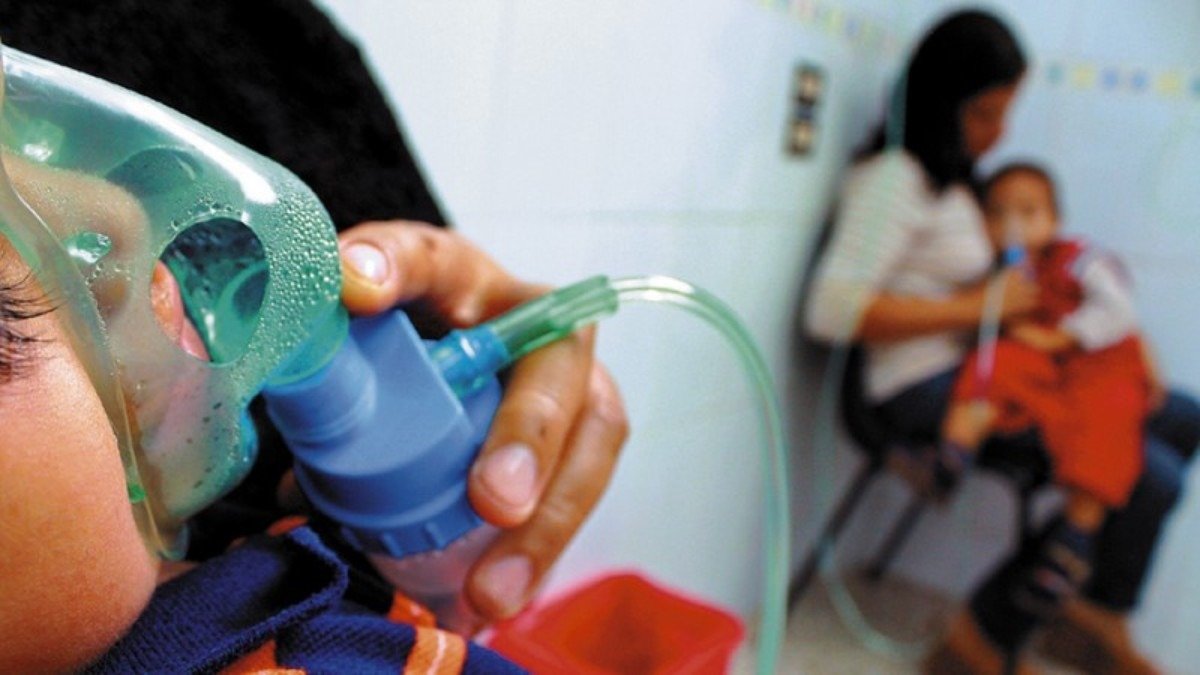At this time of year, acute respiratory symptoms are the most frequent, so the Faculty of Medical Sciences of the National University of Asunción, Hospital de Clínicas, recommend consulting in a timely manner to avoid complications.
The Prof. Dr. Mabel Peralta, specialist from the Pneumology Chair and Service of the Hospital de Clínicas, reported that the most common symptoms seen in the service are pneumonia, asthma exacerbation and COPD exacerbation, Most of which require hospitalization. While at the outpatient level respiratory infections of the autumn season prevail, such as influenza, acute bronchitis with an increase in cases of pneumology due to complications, due to respiratory virus infection.
diseases like asthma, chronic obstructive pulmonary disease (COPD) or bronchitis, are inflammatory diseases that by themselves produce chronic respiratory symptoms. “And to which an acute respiratory infection can be added, worsening the baseline condition, which is why we strongly insist that they are at-risk patients who must be immunized with the available vaccines, in order to prevent any complication such as pneumonia,” he said.
The chronic bronchitis It is a disease related to smoking. But seasonal bronchitis is an acute condition with a high prevalence of viruses that lasts less than 15 days, and is characterized by a cough with expectoration, often without fever, chest pain, respiratory distress in the most severe cases, and can be due to both viruses like bacteria.
The pneumonia It is a lung infection that can be caused by multiple microorganisms (bacteria, viruses, and fungi). They are classified into hospital pneumonia produced by the pneumococcal bacteria and community-acquired pneumonia, which is characterized by being an acute condition that manifests with high fever of 38 degrees or more, chills, cough with expectoration, sometimes mucopurulent and colored. rusty, there may be respiratory distress, the patient feels very bad for being a more severe condition.
It’s news today: Deadline for vacancies in Itaipu: denounced for harassment would infiltrate hurreros
He respiratory syncytial virus it can cause very serious pictures in patients from both extremes of life; children under 5 years of age and especially in people over 65 years of age with an underlying disease such as asthma, COPD or heart conditions, causing respiratory distress or other complications, unlike a young person who does not go through some cough or cold discomfort.
“That is why it is very important and we insist that people with acute respiratory problems of this type, both children and older adults, even if they do not have a fever, isolate themselves, wear a mask or cover their mouths when coughing, and wash their hands frequently , because they are the ones that usually cause complications, wreaking havoc in that elderly patient with underlying disease ”, stressed the specialist.
He common cold It is caused by rhinovirus or adenovirus, and usually presents with cnasal congestion, sneezing, coughing, runny nose and a little sore throat. While the flu or influenza It is a much more severe picture that always presents with fever and a lot of general malaise that makes the patient prostrate. The most frequent symptoms are headache, body aches or myalgia which may or may not be accompanied by nasal congestion or runny nose and hoarseness in some cases. It is generally the gateway to pneumonia, which is why it urges extreme care due to its high contagiousness.
Given these symptoms, it is recommended rest 5 to 7 days to avoid dragging the frame and complications. If possible, isolate yourself to prevent contagion and stay in environments with good ventilation, drink plenty of fluids. Avoid self-medicationTherefore, they highlight the importance of medical consultation to start the appropriate medication, that in the case of influenza the treatment is antiviral, while for colds, especially in viral infections, the treatment is symptomatic.
remembered that It is not precisely the cold that predisposes the disease, but confinement and overcrowding in poorly ventilated environments, due to low temperatures, which favors transmission. So they urge vaccination. “This is the ideal time to get vaccinated against influenza and pneumococcus and protect ourselves against these diseases,” remarked.
















